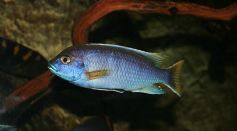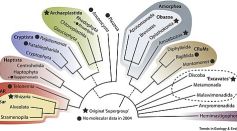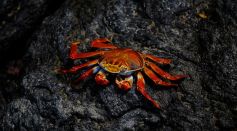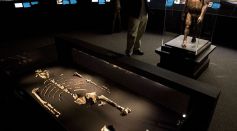Tags: Evolution

‘Pretty Privilege’ Paradox: Psychologists Explain Why Life Is Easier for Attractive People

Analysis of 17,000 Years of Fish Fossil Reveals Rapid Evolution; Cichlid Species Seized Ecological Opportunity To Diversify
New ‘Assembly Theory’ Closes Gap Between Reductionist Physics, Darwinian Evolution, Physicist Says

Homosexual Behavior Common in 1,500 Species for Social Bonding and Conflict Reduction

Birds' Vocal Learning Abilities Tied to Their Intelligence, Problem-Solving Skills, and Brain Size
Ecometrics Approach Shows the Evolution of Mammalian Traits With Changing Environments, Sheds Light on Future Biodiversity Losses

Humans Almost Went Extinct Nearly 1 Million Years Ago: How Did 1,300 Survivors Shape Humanity's Evolutionary Path?
Camouflaged Predators of the Deep: Ultra-Black Eels' Evolutionary Strategy Revealed
Parasitic Fungus Engulfed Huge Spider With Spores Bursting From Its Back As Shown in Award-Winning Photo

Bees' Origin Traced Back 120 Million Years Ago to Ancient Supercontinent Gondwana, Rewriting Evolutionary History
235-Million-Year-Old Fossil Revealed New Armored Reptile Species That Sheds Light on Dinosaur Evolution
What Will Humans Look Like in 1000 Years

Early Humans Evolved to Have Curly Hair as Protection From the Heat of the Sun, Research Reveals

Children in Suffolk Village at Risk From Deadly Hemlock; Expert Explains How Plants Become Toxic
200,000-Year-Old Woodpecker Fossil Unearthed in Argentina During Excavation, Could Fill Gaps in Evolutionary Record

What Is Convergent Evolution? Study Reveals New Insights About the Evolutionary Tree

Ancient Horses Shed Extra Toes, Embracing the Single Solid Hoof Seen Today

Crabs Have Evolved at Least 5 Times in 250 Million Years; Crabbiness Lost in Repeated Evolution

Prehistoric Human Ancestor 'Lucy' Could Have Stood Up Straight, Walked, Climbed Trees

1.6 Billion-Year-Old Rock Reveals Primordial Steroids That Shed Light on Enigmatic Evolution of Single-Celled Organisms
Most Popular

Largest Known Volcanic Aquifer Discovered Beneath Oregon's Cascades

New 'Supergiant' Sea Bug Found in South China Sea, Named After Darth Vader

Mediterranean Sea Was Refilled by a Catastrophic Flood Millions of Years Ago

Mysterious Cosmic Waves That Sound Like Birds Detected in Unexpected Space Region





